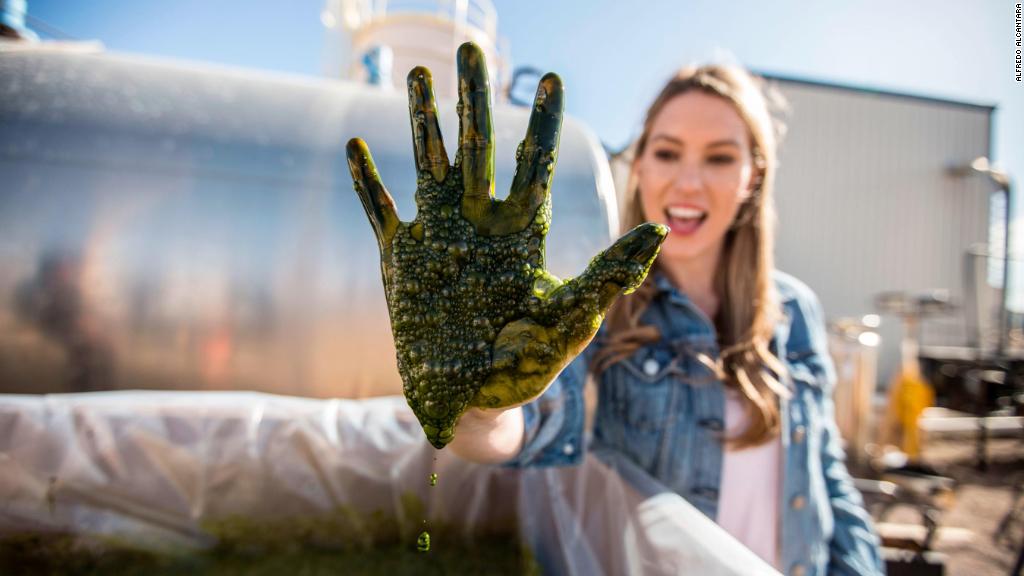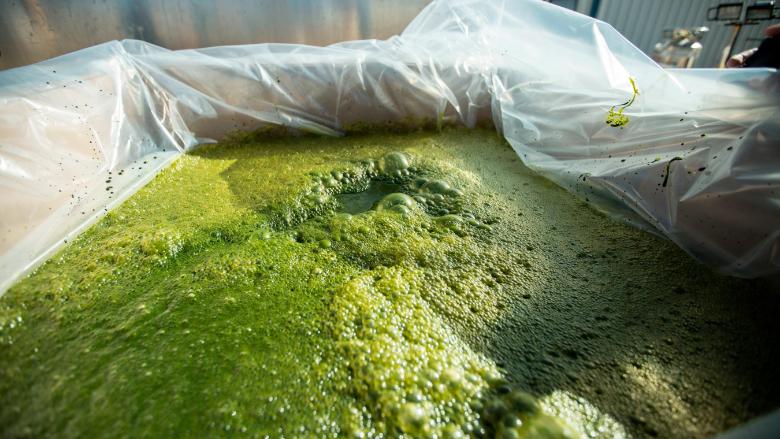New Mars Forums
You are not logged in.
- Topics: Active | Unanswered
Announcement
#26 2020-07-13 16:23:51
- SpaceNut
- Administrator
- From: New Hampshire
- Registered: 2004-07-22
- Posts: 29,730
Re: Crops, Aquatic
Well a no bee crop would be as Experts say algae is the food of the future. Here's why.

algae smoothies, algae protein bars and algae chips.
The average American male consumes 100 grams of protein daily -- almost double the necessary amount. This overconsumption isn't sustainable. The United Nations projects food production will need to increase as much as 70% by 2050 to feed an extra 2.5 billion people.
To survive, we need to reinvent the way we farm and eat. Experts say algae could be a possible solution. Unlike most crops, it doesn't require fresh water to flourish. That's a big deal. About 70% of the planet's available fresh water goes toward crops and raising livestock.
Meat uses up a lot of our finite resources, like water and land, not just for the animals but to grow their food, too. But the green slimy stuff that lives in oceans, ponds and aquariums can grow fast, is packed with nutrition and needs next to nothing to grow. It can even grow in a desert.

Offline
Like button can go here
#27 2020-07-13 17:21:00
- Void
- Member
- Registered: 2011-12-29
- Posts: 8,924
Re: Crops, Aquatic
Yes, Spacenut that is one, and some types can grow on the bottom of an ice layer, and Krill seem to like it.
Then we have Mushrooms, Potatoes, and Hydrilla. Potatoes and Hydrilla can have flowers but don't need them to reproduce in a farming situation. And I will bet there will be more.
Then Chicken Eggs, and cloned meat???
So, not so bad. Mix that up with some specialty crops where you might need pollinators. Perhaps those could be mini electric drone robots.
A good video.
Done
Last edited by Void (2020-07-13 17:26:22)
Is it possible that the root of political science claims is to produce white collar jobs for people who paid for an education and do not want a real job?
Offline
Like button can go here
#28 2020-07-13 17:28:29
- Void
- Member
- Registered: 2011-12-29
- Posts: 8,924
Re: Crops, Aquatic
Calaban, thanks for your reply and ideas.
Frankly, I see the best plan for Mars is for most people to be migratory. That they should get out of trouble, if it is winter or a global dust storm. The somewhere can be the opposite hemisphere, if winter is the problem, and in between poles orbital. And in the case of a global dust storm, if possible go orbital.
I can make a case for this being sensible in several ways. People who dwell in the high latitudes will have plenty of solar for 1/3 of a Martian year, barring a global dust storm. They can swap to the other pole early into a spring situation, but why not fly up to Phobos and/or Demos, where you can have synthetic gravity machines, which can help to keep you reconditioned, and where it may turn out child bearing and rearing work best.
If your space transports are reliable and efficient, you would not need to have that much farmland in those synthetic gravity machines, just large freezers, in case you are temporarily cut off from food from the Martian surface. However you could have things like fruit trees and such. You might have a dwelling there.
Length of the Martian year = 686.97 days, so just on a guess, chop that into 4 parts.
1/4 = 171.7425 days in each place, with alterations for Global Dust storms.
That's plenty of time to grow crops at each hemisphere, and plenty of time to vacation in orbit.
~5.72475 months. For typical crops you could grow 2 ea. because, of the "Land of the midnight sun effect".
If you have a major fault with your orbital habitats, it should be possible to evacuate to Mars. Although it may be mostly a Mining and Farming planet.
This is unlike for https://en.wikipedia.org/wiki/Gerard_K._O%27Neill , you are not radiation protecting vast farmlands in orbit, nor are you granting ~1g. They are mostly cities with parks and such. I feel it is the very best place to start synthetic gravity machines, because for Mars to orbit it is SSTO. Not a bad life, you could outfit missions to the outer solar system to make money, or work on Mars, or maybe you would have already made it and you just do what suits you.
Done.
Last edited by Void (2020-07-13 17:44:03)
Is it possible that the root of political science claims is to produce white collar jobs for people who paid for an education and do not want a real job?
Offline
Like button can go here
#29 2020-07-13 18:27:15
- Calliban
- Member
- From: Northern England, UK
- Registered: 2019-08-18
- Posts: 4,206
Re: Crops, Aquatic
According to this reference, all of the Vitamin A present in Hydrilla is in the form of Beta Carotene.
https://www.backtoyourrootsherbs.com/pr … ticillata/
So no issue with Vit A toxicity. My previous reference was incorrect.
This should mean that there are no issues with adding large amounts of hydrilla to human diets.
Also of interest:
https://en.m.wikipedia.org/wiki/Laverbread
Which is made from:
https://en.m.wikipedia.org/wiki/Porphyra
Something else that we might grow.
Last edited by Calliban (2020-07-13 18:33:36)
"Plan and prepare for every possibility, and you will never act. It is nobler to have courage as we stumble into half the things we fear than to analyse every possible obstacle and begin nothing. Great things are achieved by embracing great dangers."
Offline
Like button can go here
#30 2022-10-02 16:02:19
- Mars_B4_Moon
- Member
- Registered: 2006-03-23
- Posts: 9,776
Re: Crops, Aquatic
Microalgae promise abundant healthy food and feed in any environment
https://phys.org/news/2022-09-microalga … nment.html
“Enriched seaweed” could ease the global food crisis
https://www.anthropocenemagazine.org/20 … od-crisis/
Offline
Like button can go here
#31 2023-03-18 08:50:17
- Mars_B4_Moon
- Member
- Registered: 2006-03-23
- Posts: 9,776
Re: Crops, Aquatic
It might go in one of our Pollution or Climate change topics which I can not find for now
but maybe lessons for Mars
‘The smell is next level’: millions of dead fish spanning kilometres of Darling-Baaka river begin to rot
https://www.theguardian.com/australia-n … gin-to-rot
Reports emerged of the mass fish kill near the western New South Wales town, with the numbers of dead fish likely in the millions.
Offline
Like button can go here